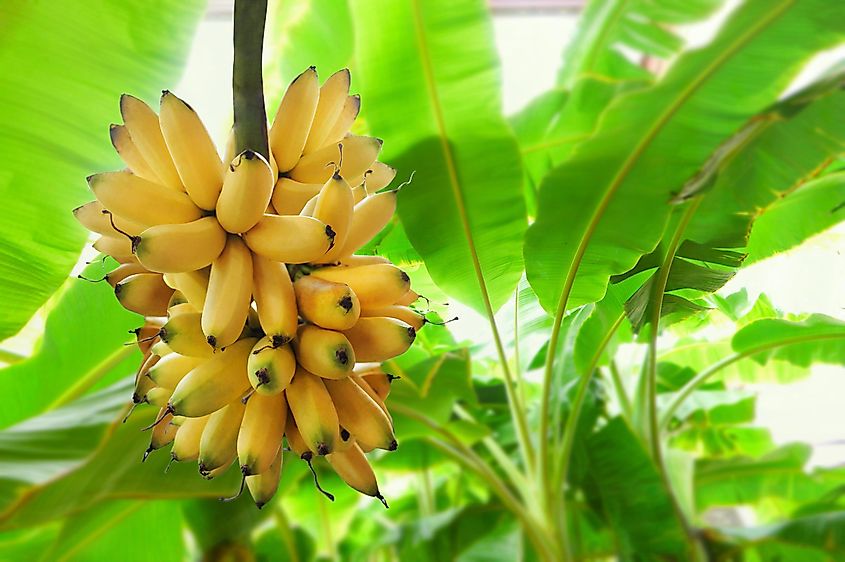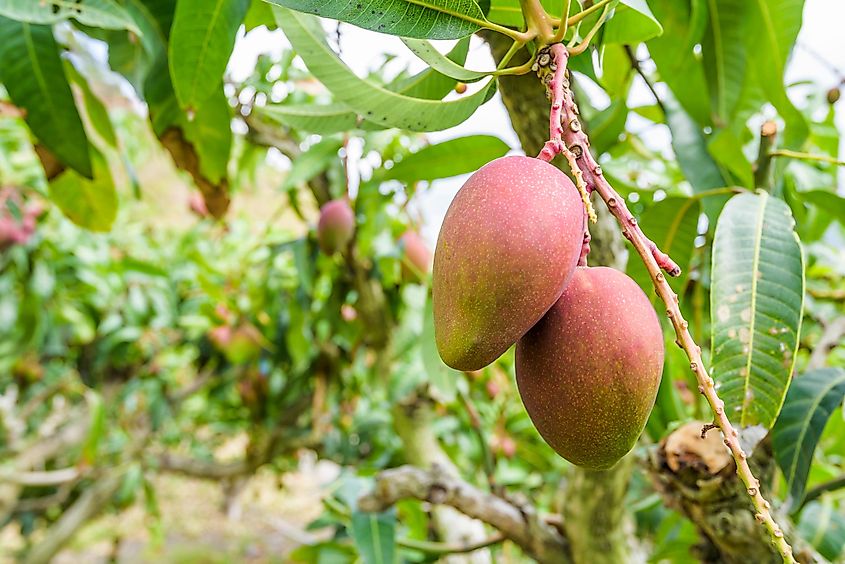Most Popular Fruits In The World

- In Egypt, Pharaohs were buried with watermelons at their sides, being a prized fruit worthy of accompanying monarchs on their last journey.
- One of the most filling foods, avocado, provides a healthy dose of fiber and nearly half of fatty acids.
- Mangoes are considered to be superfruits, providing physical, psychological and even sexual benefits.
Fruit is popular around the world, for good reasons: delicious, ready to eat, and abundant in nutrients such as fibre and vitamins. Comprised of mostly water, fruit is great for quenching thirst and beating hunger in a single punch. Their health benefits can be consumed in various ways like smoothies, sorbets and even ice cream, they can be used in cooking and baking, as well as for decorating dishes. Perhaps the only downfall to fruit is that it is a quick source of energy that also lacks in protein, making it a good snack to hold one over until the next meal. Here are the most-harvested fruits in the world, measured in million metric tons.
Tomatoes - 182 Million Metric Tons
Wild tomatoes originated in the Andes, Western regions of Bolivia, Peru, Chile and Ecuador, and cultivated for the first time around 700 AD by the Aztecs and Incas. They were brought to Europe by explorers returning from South America, and have been beloved around the world ever since. China leads in growing tomatoes at almost 57 million tonnes a year.
Fresh, sundried, marinated, juiced, canned: tomatoes are everywhere and the options are endless. Used for the most popular dishes in the world from making pizza and pasta sauces to the humble ketchup for burgers and fries, it is also an integral ingredient to most salads, such as Greek or tomato & mozzarella, as well as undisputed in omelettes.
Bananas - 115.74 Million Metric Tons
It is believed bananas originated 10,000 years ago in the South Pacific or Southeast Asia, around 8000 to 5000 BCE, which is the place and time they were first domesticated, but pinpointing the banana's origins has proven to be difficult. New Guinea's Kuk valley is known to have had bananas at this time, and it is thought from there they were brought to the Philippines. India produces close to 30 million tons of bananas on a yearly basis.
Bananas are incredibly convenient for a snack on the go, coming with their own protective case and easy-peel with no washing required. Providing a fifth of the recommended daily B6 vitamin, they help metabolize proteins, fats and carbohydrates. They are also a good source of vitamin C for immunity (10%), fibre for digestion (2.6 grams), and magnesium for the brain (9%). A little-known fact is that bananas also help the body produce melatonin for sound sleep, especially when paired with Greek yogurt or cottage cheese.

Watermelons - 103.97 Million Metric Tons
Nothing hits the spot like a refreshing sweet watermelon on a hot summer's afternoon. Watermelons originated around present-day Egypt. There, ancient hieroglyphs have been found referring to watermelons, which were considered a prized fruit and were even included in Pharaohs' tombs for their last journey to the afterlife.
Today, China majorly leads in watermelon production, growing nearly 73 million tonnes on a yearly basis. Watermelons are also commonly used in making alcoholic and non-alcoholic drinks for their natural sweetness and water content.
Apples - 86.14 Million Metric Tons
Apples originated in Central Asia, having a deep connection to the Silk Road, along which they thrived. They were first domesticated in southern Kazakhstan, around 2000 BCE.
Perhaps the best thing about apples is their crunch, as well as the choice of sweetness from their many different varieties. Most apples in North American supermarkets are grown on the same continent, for the ease and price of distribution, and in Asia. China is the leader in apple production with almost 45 million tonnes each year, while Japan's Fuji variety is favored by many for the large fruit size and a satisfyingly sweet crunch.
Oranges - 75.54 Million Metric Tons
Oranges were first cultivated in China, around 2500 BCE, and introduced to the Americas in 1493, on Columbus' second trip. The top producing country of oranges today is Brazil at about 15 million metric tons, about 20% of the oranges produced in the wolrd.
As a favorite fruit for many, it is not surprising why orange is the most popular juice choice for breakfast. Succulent, sweet, and with more than 100% of the daily vitamin C required, its only downside is the potentially messy peeling.
Mangoes - over 40 Million Metric Tons
India produces almost half of the global total of mangos at over 20 million metric tons each year. Having been cultivated for the last 4000 years primarily in the Indo-Myanmarian region, mangoes did not arrive in the Americas until the 18th century with the Portuguese who introduced them to Brazil, and Spaniards who brought over the trees to Mexico from the Philippines.
Mangoes provide the daily recommended intake of vitamin C and are a source of vitamin B6 and fibre. Their positive effects on brain health and sex drive, as well as their anti-ageing properties, are just a few of the reasons mangoes are considered superfruits.

Pears - 23.73 Million Metric Tons
Uniquely, pears did not originate in a single region but are native to many parts of the world, including much of Europe, Asia, and some northern regions of Africa. Evidently, these fruits have been around for a while, enjoyed prehistoric times and cultivated in China for at least 3,000 years. Today, China is still the biggest producer of pears, at over 16 million metric tons annually.
Although underrated in the West, pears are just as popular as apples in Eastern European countries, being a sweet and cheap treat at street markets and on a supermarket's shelves. Grown in most gardens, and even streets, it is often picked by the locals on the way to work. Pears are also used in making compotes, a dessert of boiled fresh and dried fruit, or comfitures for the main dish.
Avocadoes - 6.41 Million Metric Tons
A native fruit, avocadoes originated in South-Central Mexico sometime from 8000 to 5000 BCE, and became domesticated there by the locals 5,000 years ago. Columbus and his companions learned of the fruit from the Aztecs at the end of the 15 century. Mexico is still the biggest producer of avocadoes at 2.2 million metric tons.
A unique source of fatty acids in fruits, avocadoes provide nearly half of the recommended daily intake of healthy fats and are a good source of fiber. These fats, along with its other vitamins and minerals, are responsible for glossy hair and healthy skin.
Most Popular Fruits In The World
| Rank | Fruit | 2018 Production (in Million Metric Tons) |
|---|---|---|
| 1 | Tomatoes | 182.3 |
| 2 | Bananas | 115.74 |
| 3 | Watermelons | 103.97 |
| 4 | Apples | 86.14 |
| 5 | Grapes | 79.19 |
| 6 | Oranges | 75.54 |
| 7 | Mangoes and Guavas | 55.38 |
| 8 | Plantains | 39.48 |
| 9 | Tangerines, Mandarins and Clementines | 34.39 |
| 10 | Pineapples | 27.92 |
| 11 | Melons | 27.35 |
| 12 | Peaches and Nectarines | 24.45 |
| 13 | Pears | 23.73 |
| 14 | Lemons and Limes | 19.39 |
| 15 | Papayas | 13.29 |
| 16 | Plums and Sloes | 12.61 |
| 17 | Grapefruits | 9.37 |
| 18 | Dates | 8.53 |
| 19 | Strawberries | 8.34 |
| 20 | Avocados | 6.41 |
| 21 | Persimmons | 4.71 |











